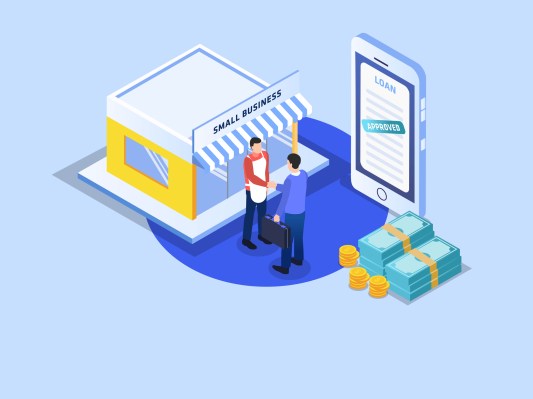What’s the difference between a startup and a small business? Semantics, mostly. As many startups find themselves struggling to raise funds from venture capitalists as financing continues to decline this year, the U.S. Small Business Administration (SBA) could prove to be a powerful resource for capital, even if startups traditionally look for funds from other sources.
Chris Hurn, the founder and CEO of Fountainhead, knows the potential benefits of taking on government financing. Fountainhead is a nonbank lender of government-guaranteed loans. Hurn said the current generation of entrepreneurs is laser-focused on raising equity-based funding from backers like venture capital firms — but that isn’t their only option, especially as equity gets more expensive in current market conditions.
“The problem is that business owners oftentimes overlook pretty readily available debt capital,” Hurn told TechCrunch. “They don’t have to give up any equity. [SBA loans] can oftentimes be the exact stepping stone they need to get to the next stage.”
Getting to the next stage of financing is especially challenging for early-stage startups right now, as I noted last week. Many startups that need funds the most are having the most trouble raising in the current market conditions, which often put extension rounds out of reach. A good percentage of these companies would be eligible to access an SBA 7(a) loan.
These loans can run up to $5 million — it’s worth noting that is the exact amount startups can currently raise through equity crowdfunding rounds, which many founders are pursuing due to these market conditions — and are paid back over the course of up to 10 years.
Hurn added that unlike most venture debt products or traditional bank loans, companies don’t need revenue to be approved. He said if companies can provide a solid business plan with financial documentation of how it will produce recurring revenue, that works just fine.
If more startups knew that there were no revenue requirements for SBA loans — not the case for many revenue-based financing options out there — they may take on more of the stuff given a dearth of extension rounds. But the appetite for venture debt more generally is not increasing. In the first half of 2022, $15 billion flowed through venture debt loans, putting the market on track to miss 2021’s full-year total of $33 billion, according to PitchBook data.
To be eligible, companies need to be majorly owned by a U.S. citizen, have fewer than 500 employees, have made less than an average of $5 million in net profits over the past two years and be worth less than $15 million. Startups can also have raised prior backing from investors as long as each individual investor owns less than a 20% stake.
Hurn said these loans can be used for anything from hiring and marketing to partner buyouts and company acquisitions.
“People are still surprised that SBA offers as good of terms as they do,” Hurn said. “It’s really important coming into an economic slowdown and possible recessionary times — that’s exactly when the ordinary conventional bank pulls back. That’s when they go to the sidelines.”
While these types of loans obviously aren’t for every business, Hurn said if a company is eligible for this type of financing — especially with how expensive equity is this year — they shouldn’t be ignored.
“Some of the most famous companies: Nike, Outback, Under Armour … there is a laundry list of fairly famous, sizable companies that were helped along in their early days by SBA financing,” Hurn said. “It’s a very legitimate option that is unfortunately often overlooked.”
